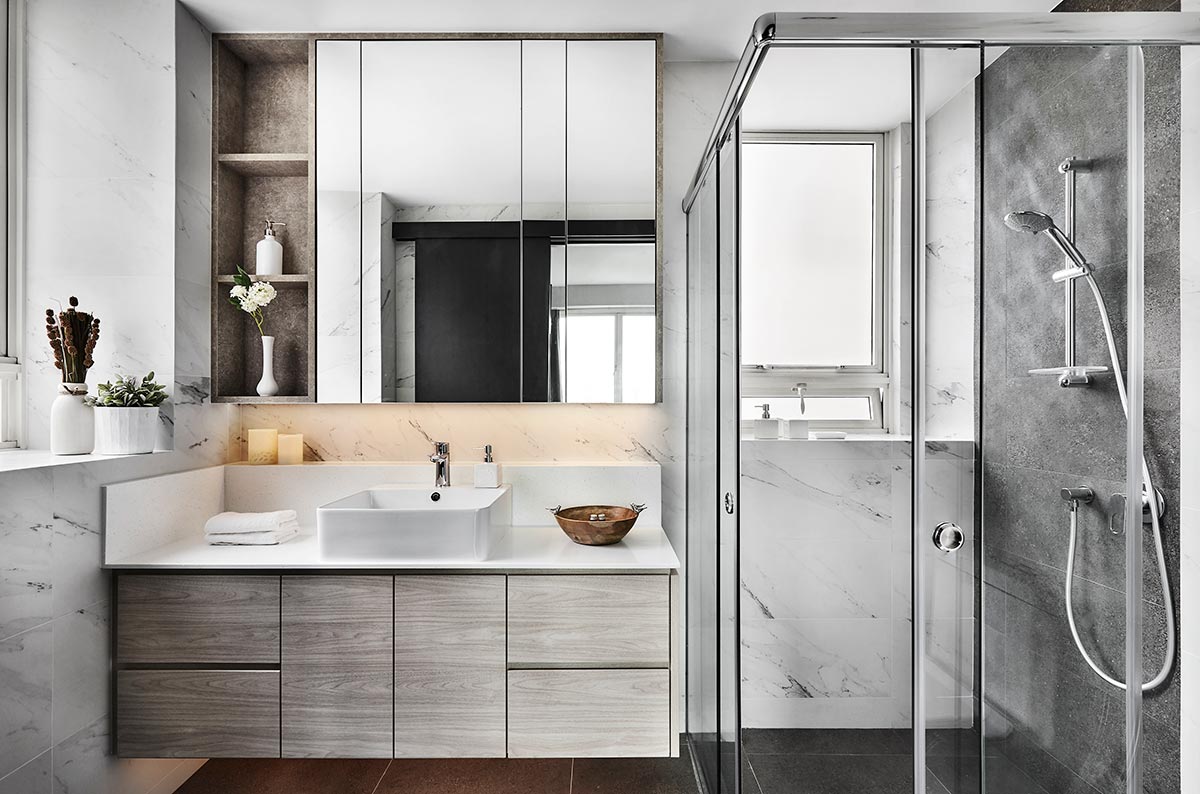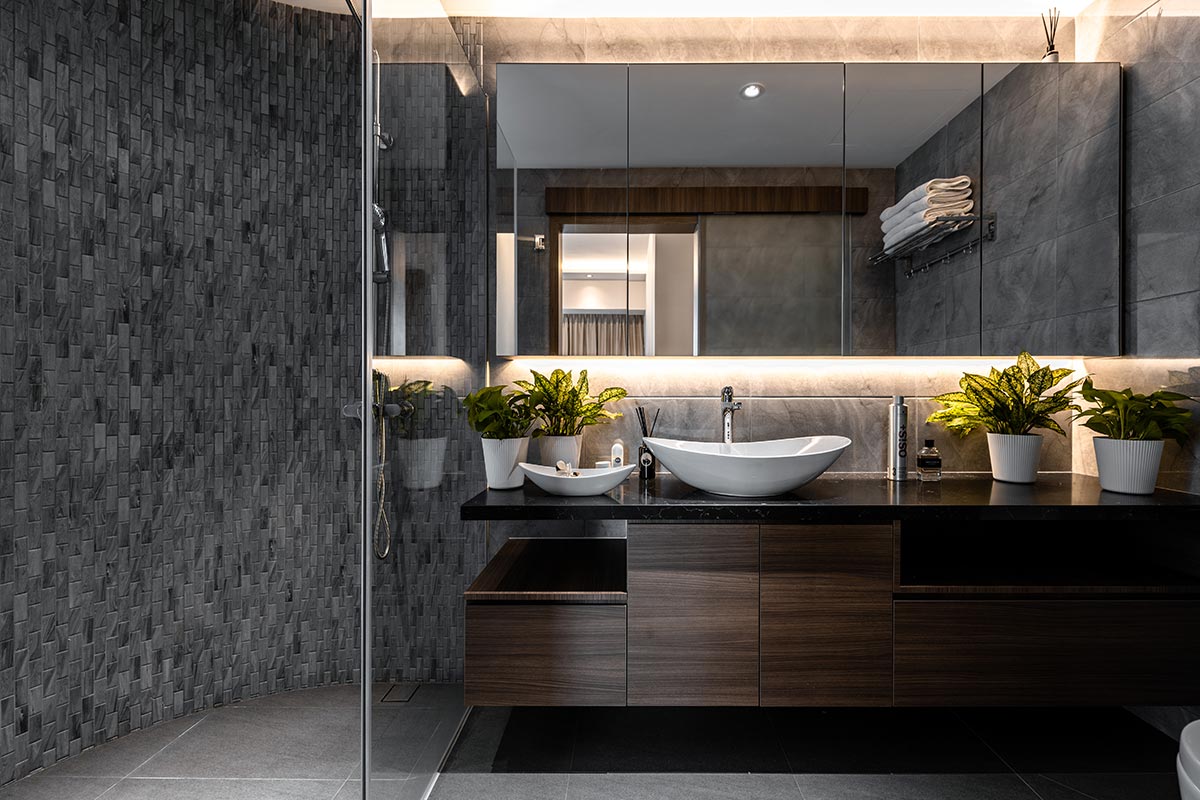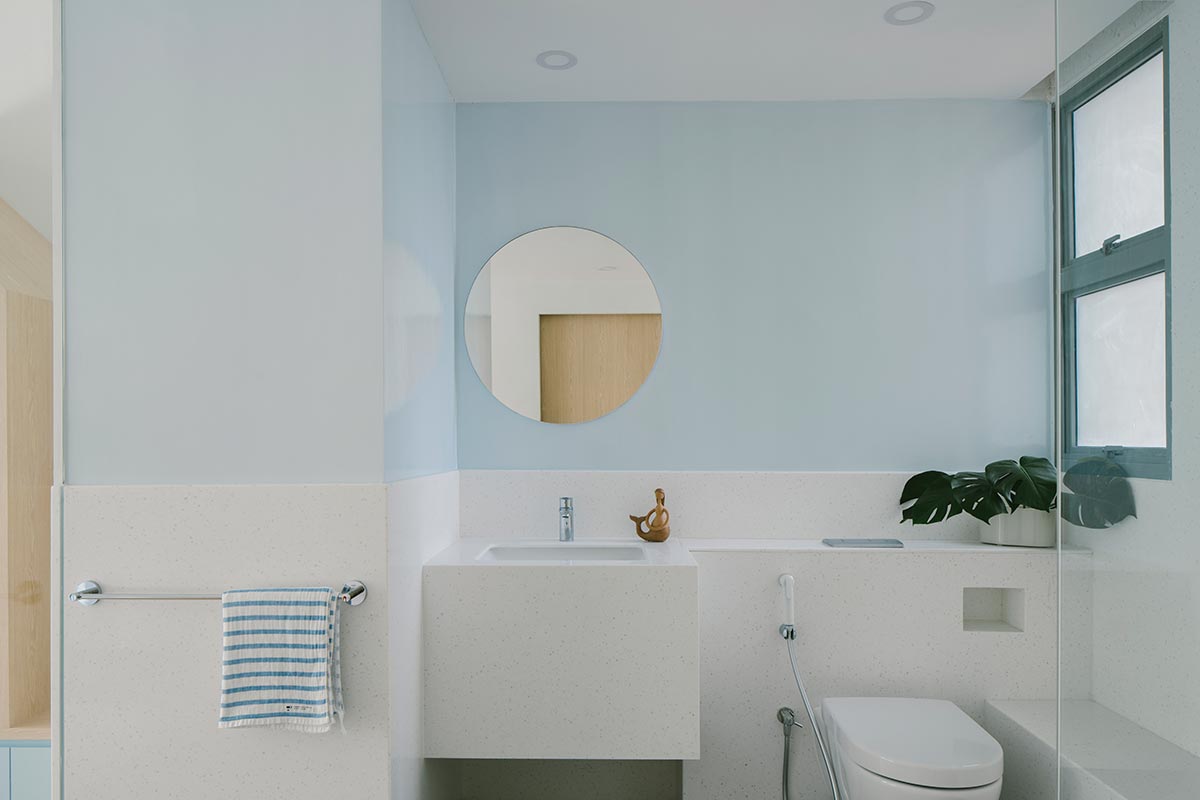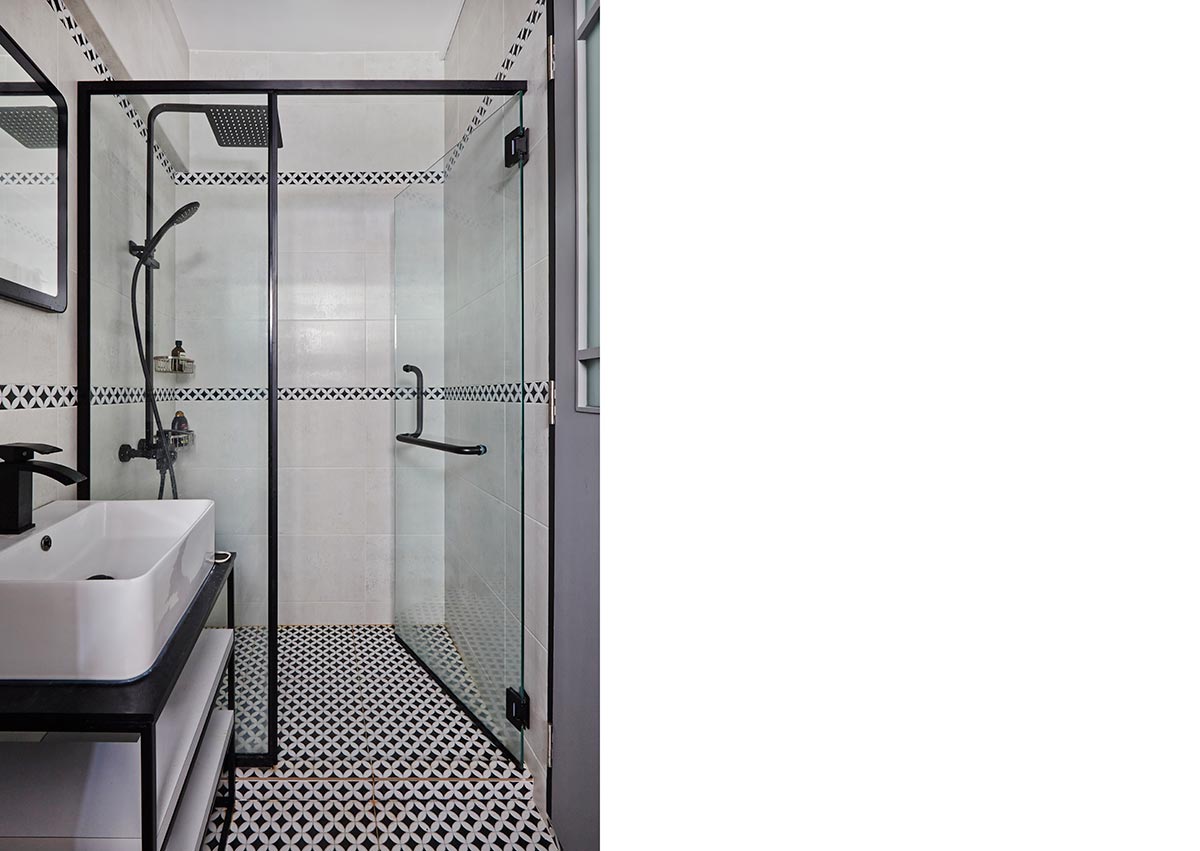Renovating your bathroom isn’t cheap, so it is necessary that you make sure the new space delivers on all aspects of form and functionality. But before you start panicking, we’ve compiled a list of layout mistakes that first-time renovators usually make, and how to avoid them here.
#1 Not having sufficient storage
While there’s nothing wrong with focusing on aesthetics in the bathroom, functionality takes precedence. And with storage being a big part of functionality, rather than simply tacking on a mirror to the wall, consider a mirror cabinet instead. This way, not only will you have your regularly used essentials – like your toothbrush, shaver and makeup – right at your fingertips, it also frees up your under-sink cabinet for larger items. Take note that mirror cabinets should be the same width as or slightly smaller than your vanity, never larger.

Image credit: Richfield
#2 Poor lighting
Yes, downlights are an important source of illumination for the bathroom, but only utilising these ceiling fixtures will result in a space that lacks ambience, which makes it far from a relaxing private sanctuary to spend time in. As such, always invest in a proper layered lighting scheme that includes multiple light sources. This means that in addition to installing downlights for general illumination, you should also include concealed LED light strips under cabinets for ambience purposes, and task lighting – such as a pair of wall sconces – on either side of the mirror for grooming or when you’re putting on makeup.

Image credit: The Orange Cube
#3 Not considering the location of accessories
From the toilet roll holder to the towel rack, there needs to be some careful consideration put into the placement of these accessories to ensure that your bathroom will function in the way you want them to. Just think, you wouldn’t want to step out after your shower and have your towel out of reach. As such, think about how you’ll use and move through the bathroom and position these accessories accordingly.

Image credit: The Monocot Studio
#4 Not creating separate zones
We understand that bathrooms nowadays are getting smaller, but that doesn’t mean that we should be deterred from creating separate zones here for fear that it will make the space look and feel even smaller. Wet and dry zones are necessary here because it will not only make your bathroom easier to clean, it will also prevent your built-in fixtures from going mouldy by reducing its exposure to water. Luckily, no matter the size of the bathroom you have, there are plenty of ways to separate your wet and dry zones. These range from installing a floor-to-ceiling partition wall to installing a clear frameless glass panel, or even creating a split-level effect by placing the wet shower atop an elevated platform.

Image Credit: Fuse Concept



